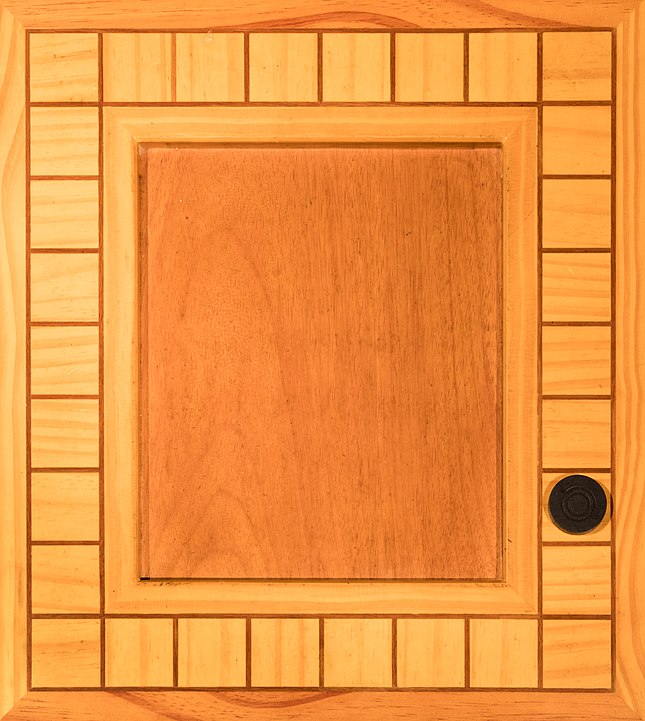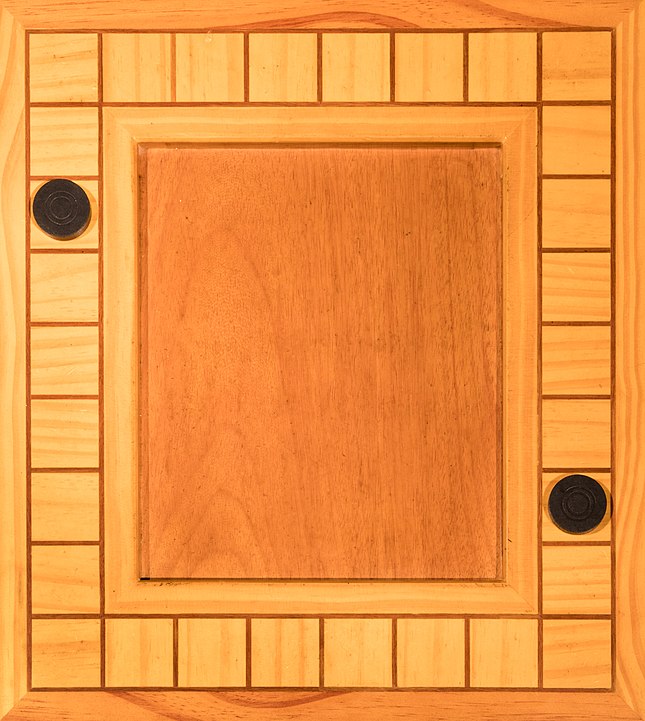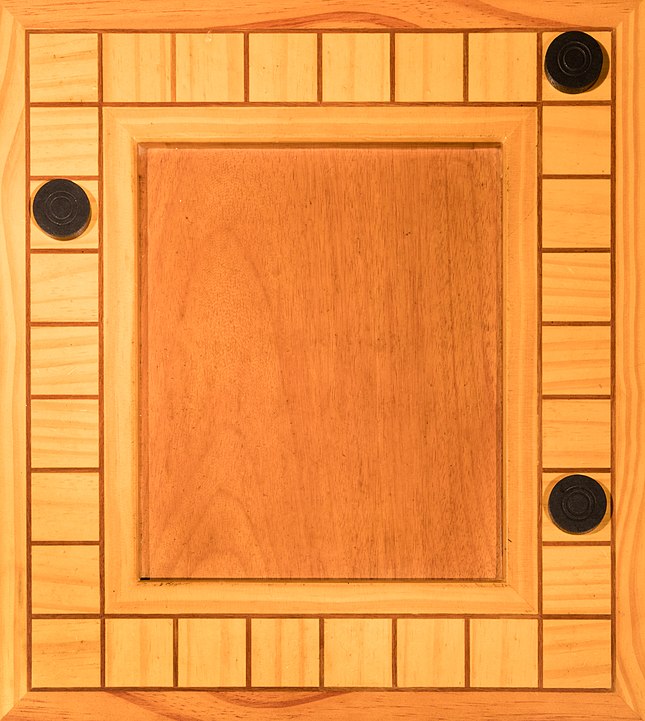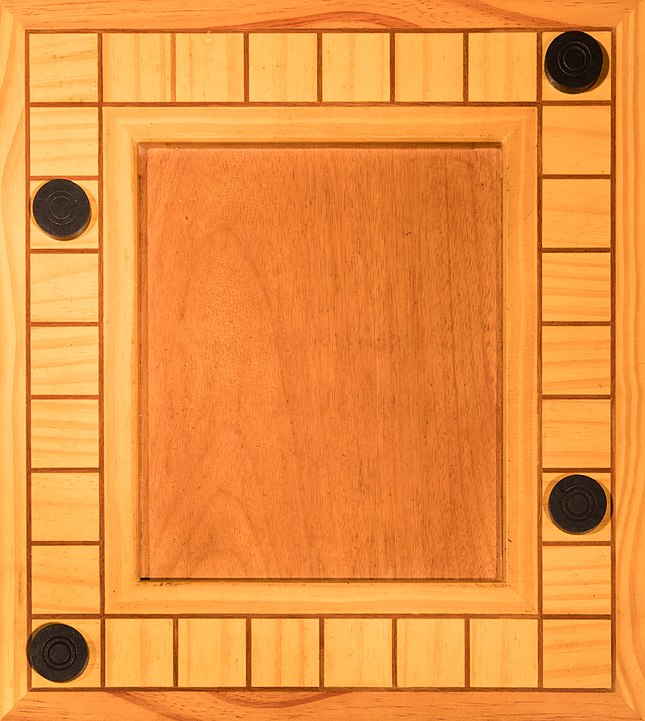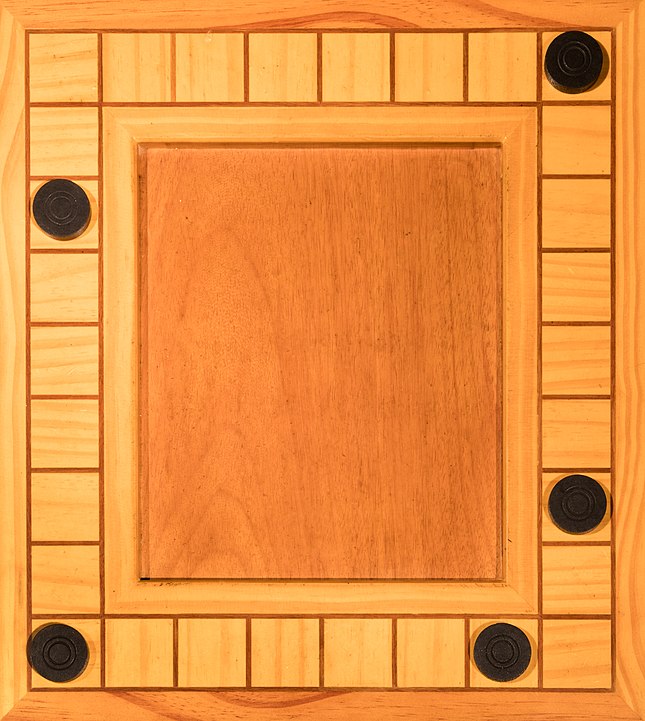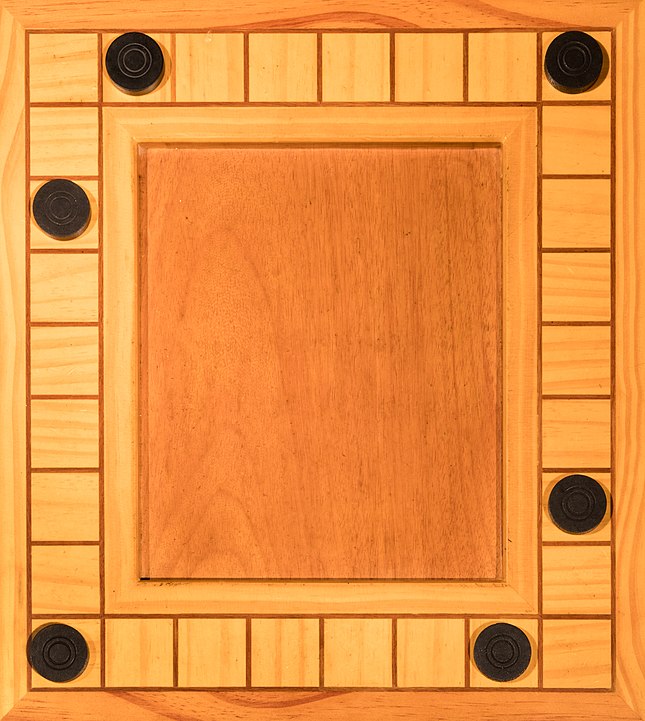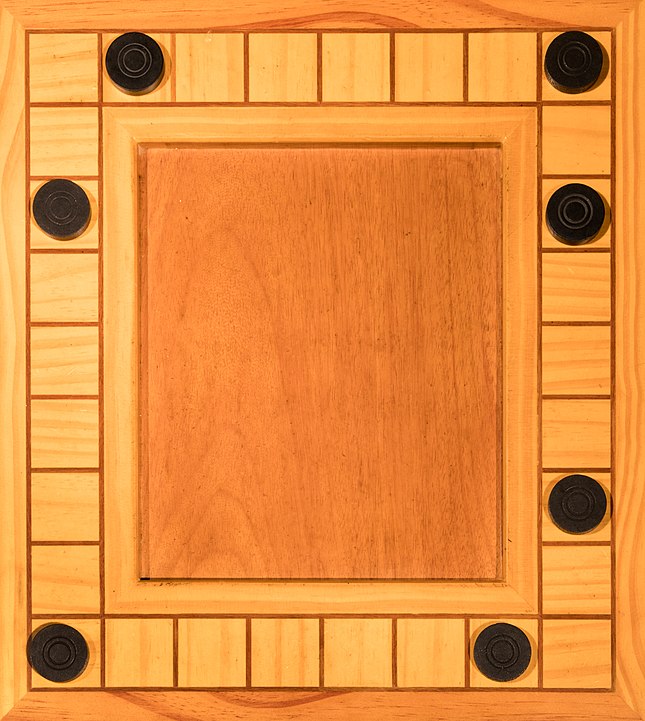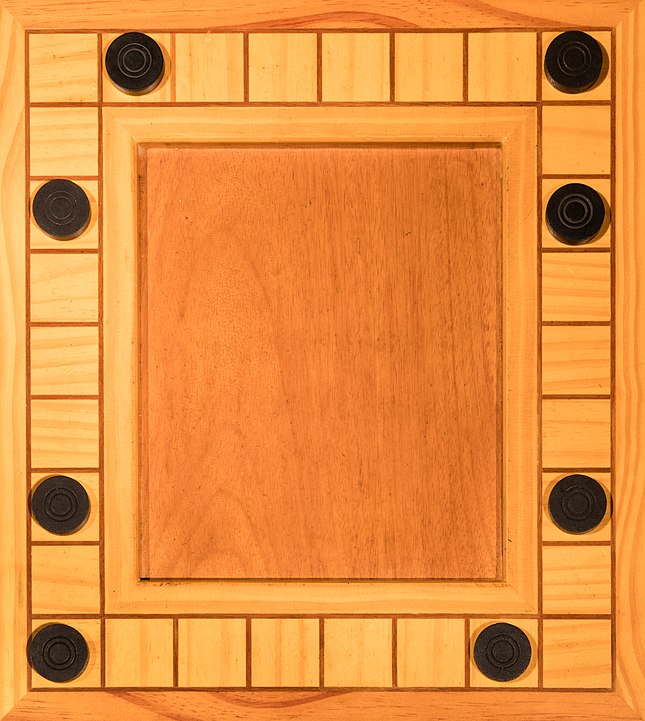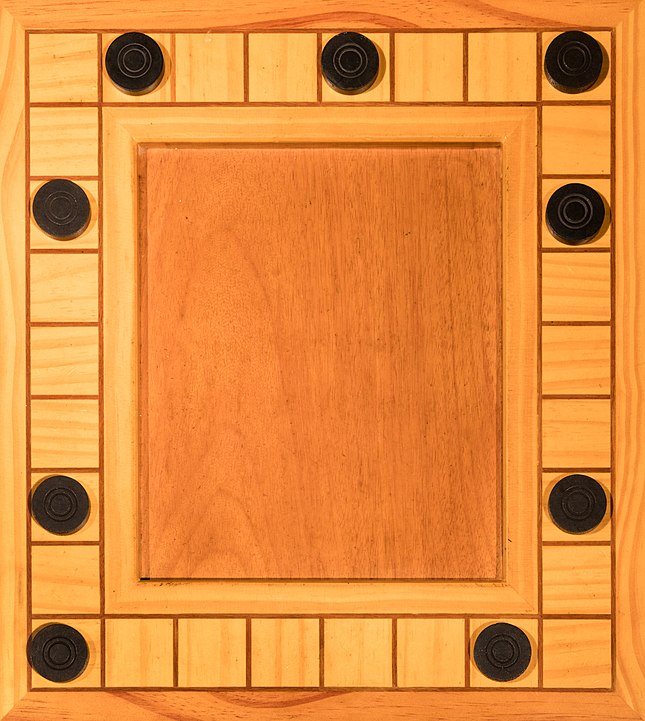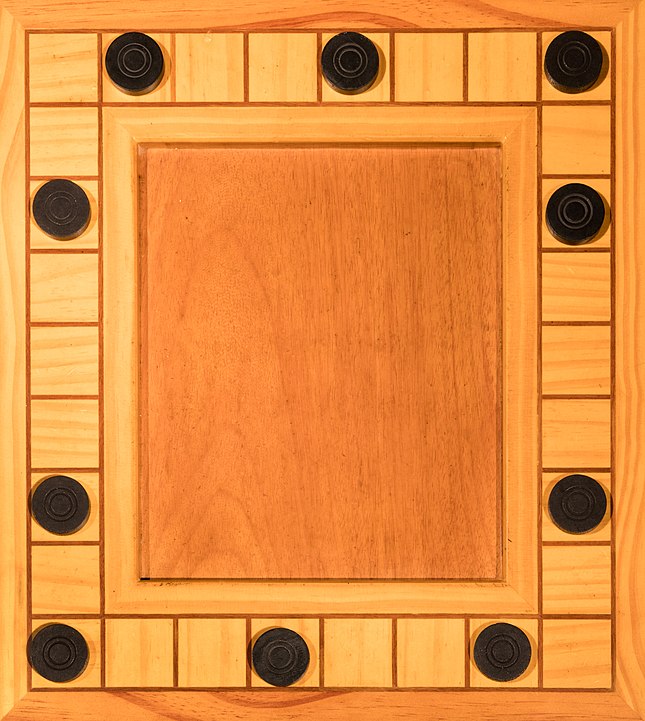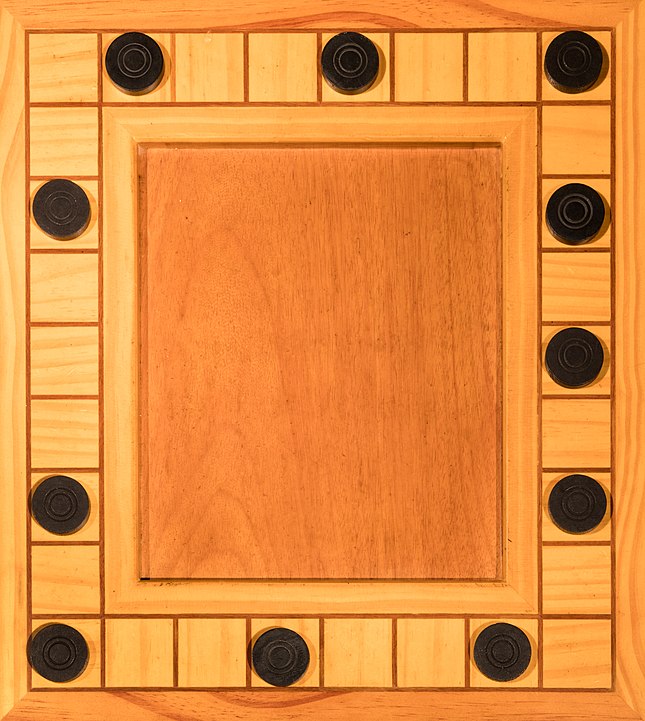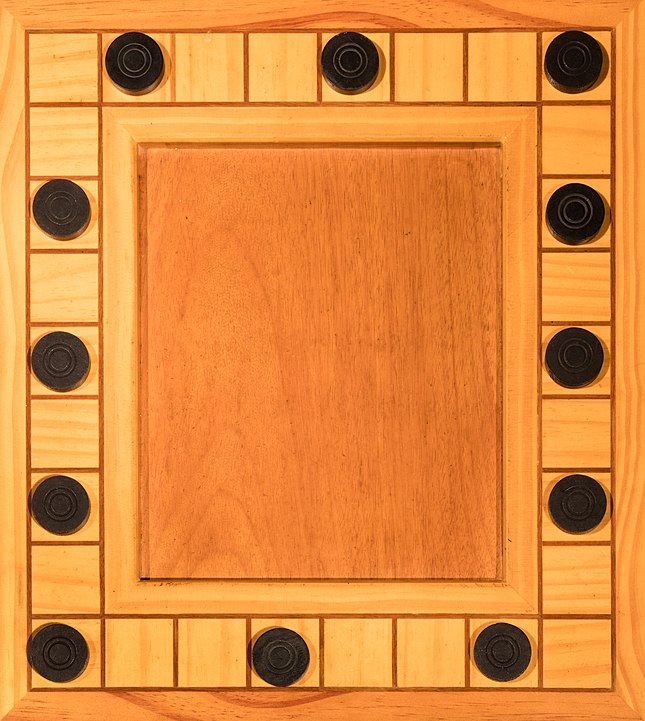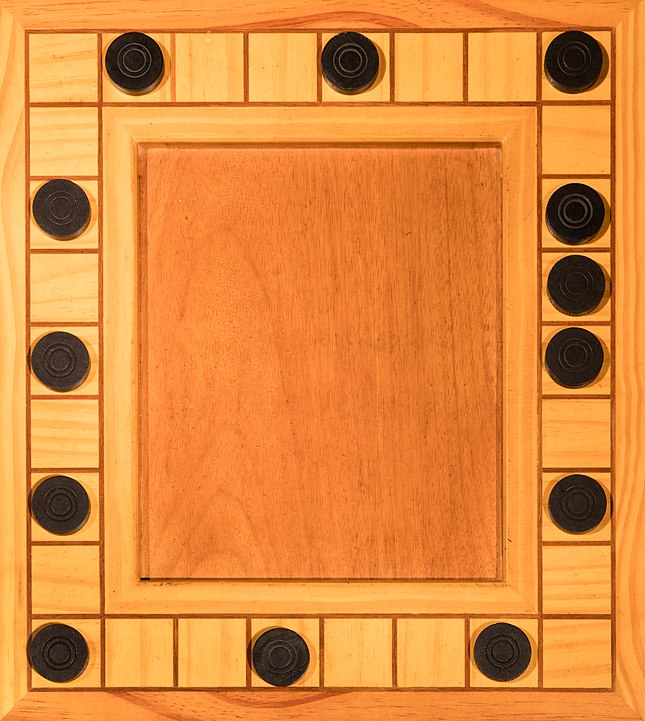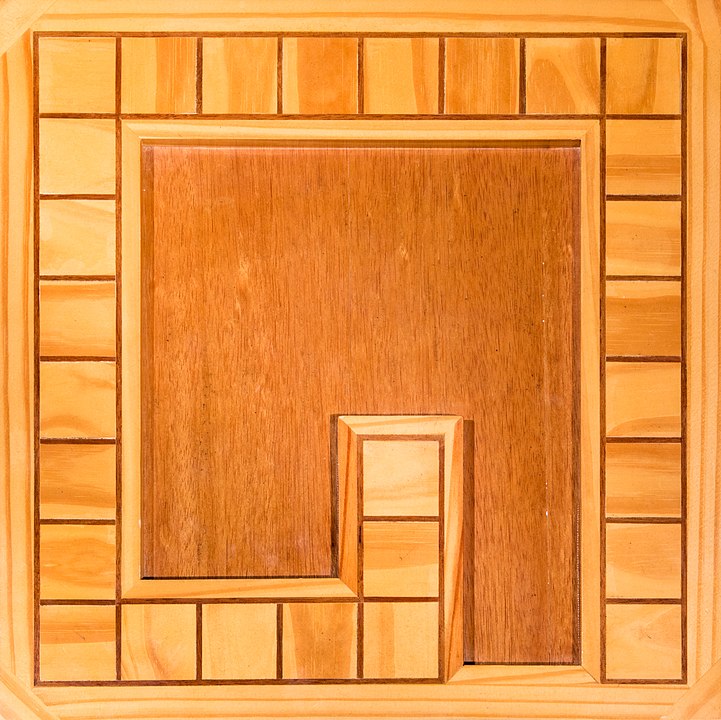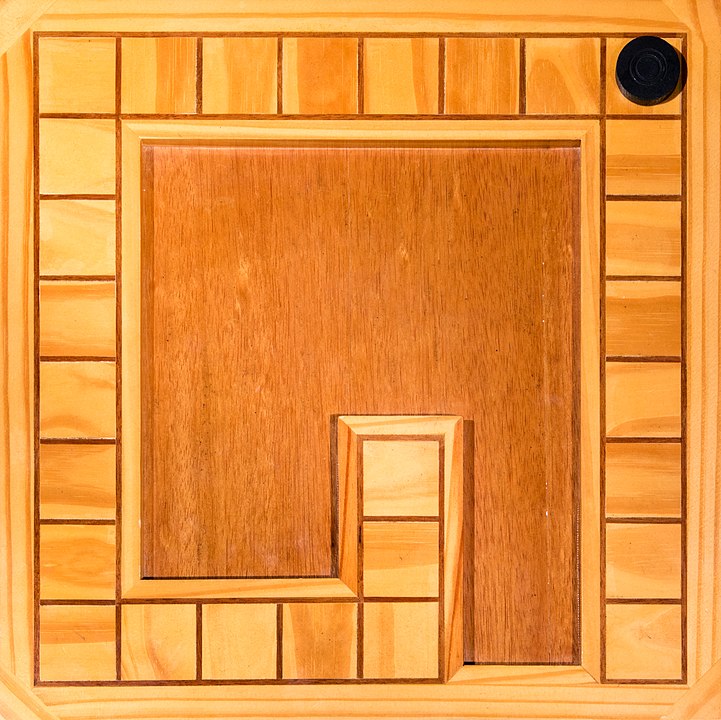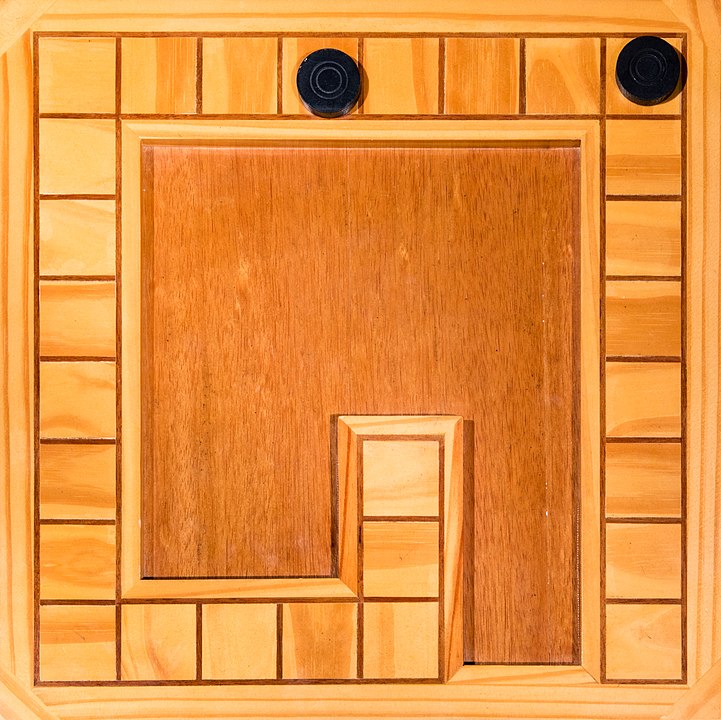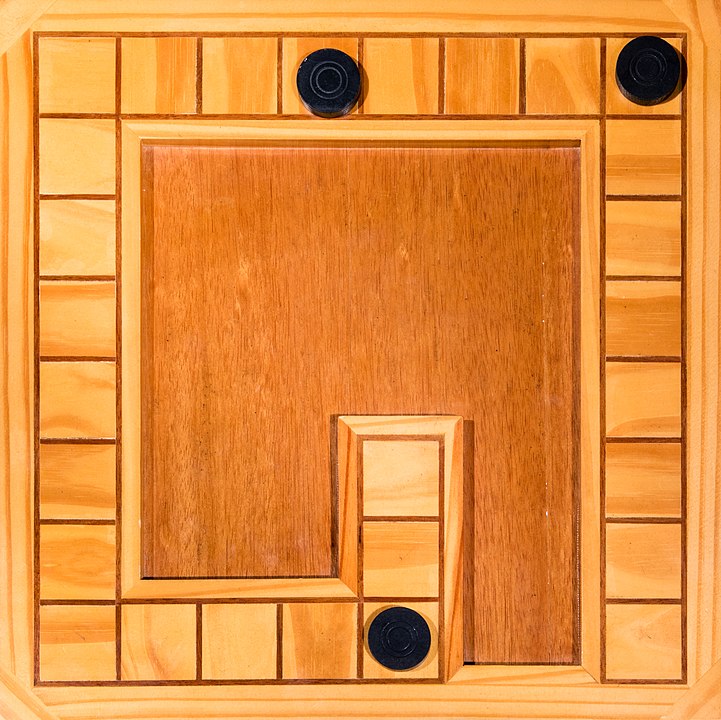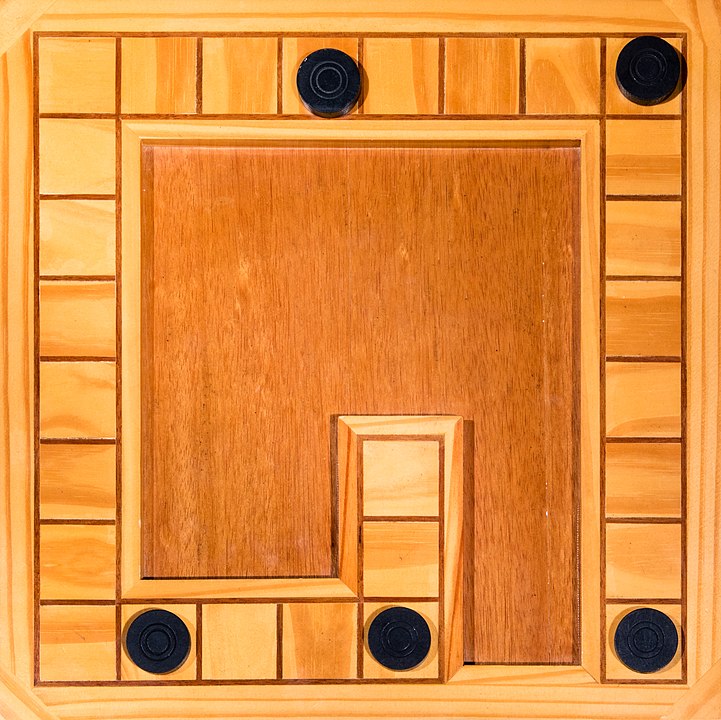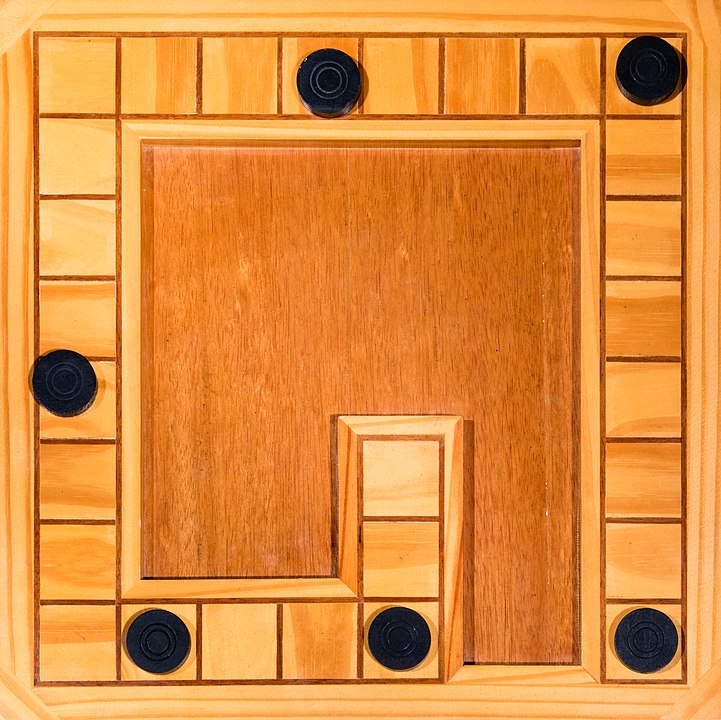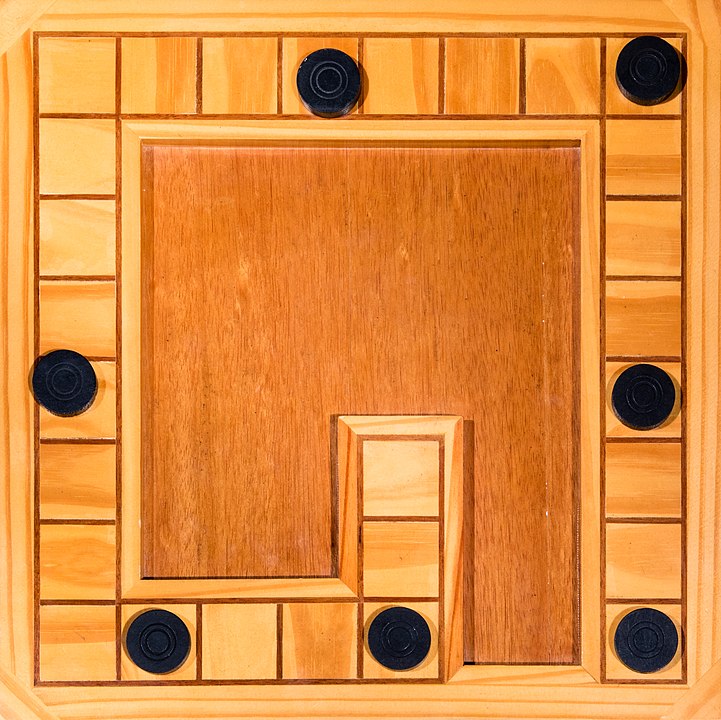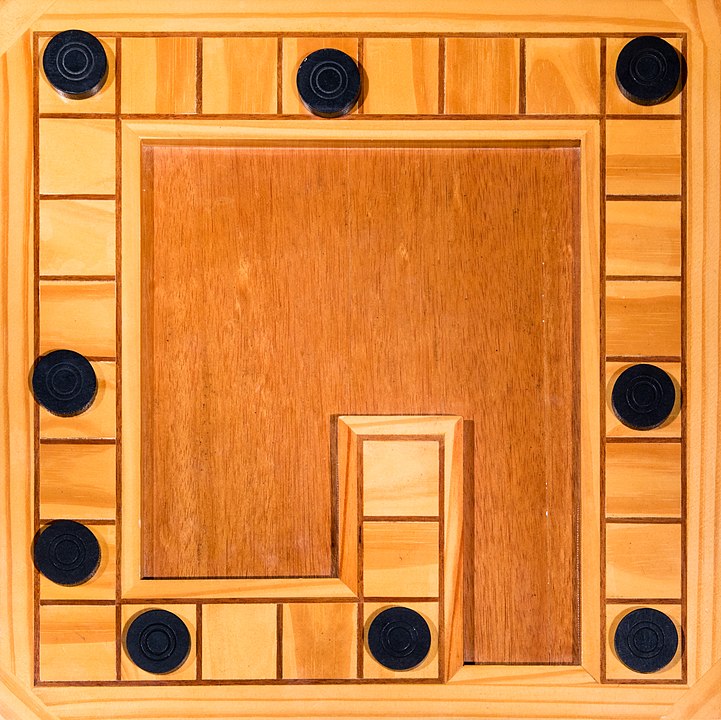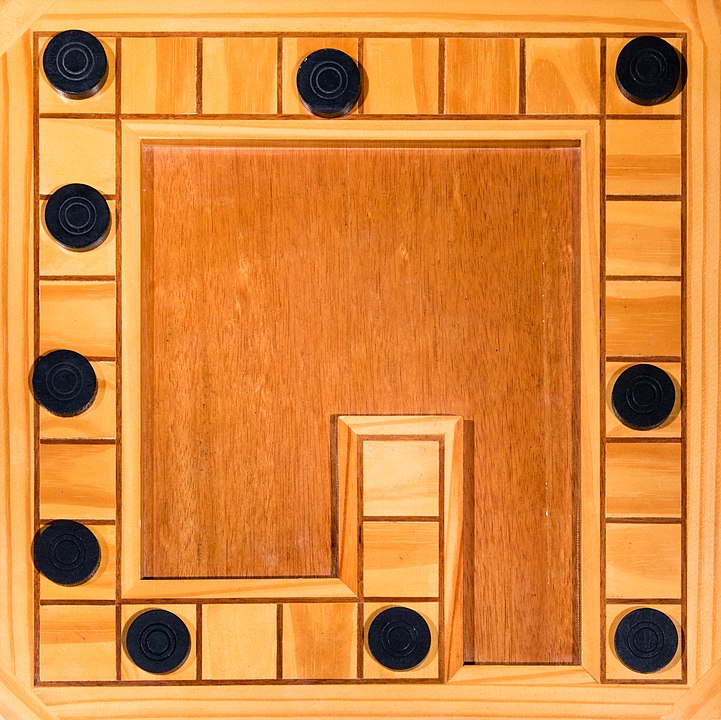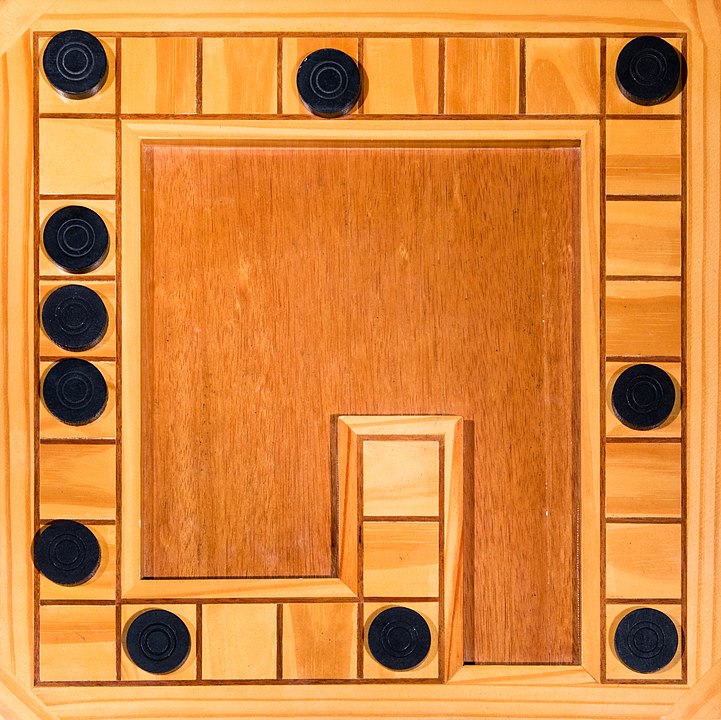OLYMPIC REVENGE BOARD
In the Brazilian Mathematical Olympiads, the problems presented in the “Olympic Revenge” test are created by the students as a challenge for the teachers. Prof. Ângelo Barone, from IME-USP, brought the idea for this game to Matemateca, which was presented at the IV Revenge Olympic competition.
The easiest board to understand is the circular one with an even number of squares. The second player can always choose a move that is “symmetrical” to the previous move. Thinking about it, you can see that there is a winning strategy for the second player!
In addition to this, we have two more different boards at Matemateca. In each case, can you determine whether there is a winning strategy for any of the players?
Each player, in turn, places a piece on an empty square. The winner is the one who, after his move, gets (at least) three consecutive full spaces. Notice that both players play with the same pieces.
So, are you up for a match?
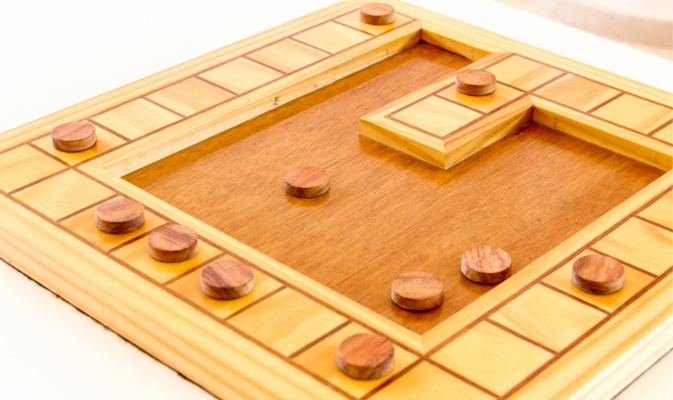
Below, we have two games, photographed by Rodrigo Tetsuo Argenton, each on a different board. Did any of the players use the winning strategy?

